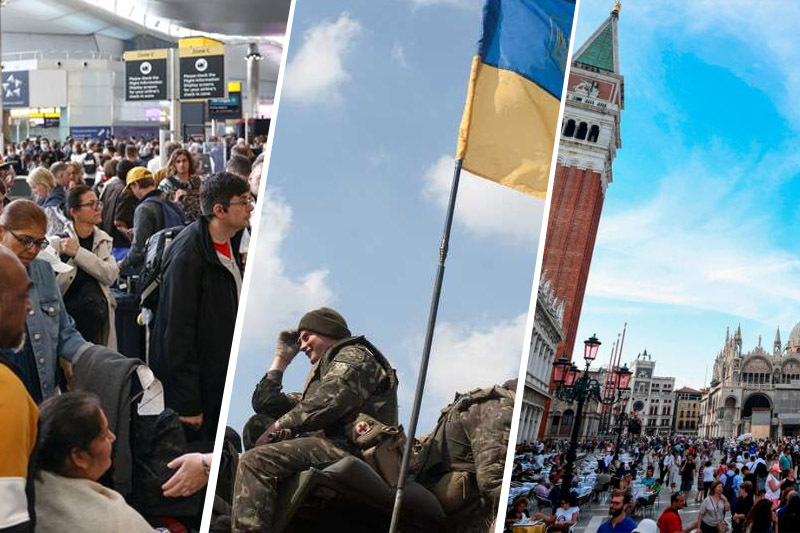
Traveling to Europe: 5 Hidden Costs That Will Bust Your Budget
“Do you have a dream vacation to Europe planned? It’s important to be aware of the hidden costs before you pack your bags and make flight reservations because they can surprise even the most thrifty travelers. These 5 costs, which range from unforeseen fees to pricey tourist traps, will deplete your budget faster than you can say “bon voyage.” Please read on for our guide to avoiding the financial pitfalls of traveling to Europe.
1. Introduction
Accommodation:
Europe is beautiful but expensive. Europe’s extra costs can ruin your budget if you’re not careful. Observe these:
Tourist destinations in Europe have high hotel prices. Avoid overpaying for your room. Before traveling, look for deals and consider Airbnb or hostels.
Transportation:
Europe is expensive, especially if you take public transport. Plan your route and look for deals because train and bus tickets are expensive. Rent a car.
Food and drink:
European vacations can be expensive due to eating out. Try your hotel’s free breakfast or cheap restaurants for a good meal. Drinking expensive cocktails and coffee can ruin your budget.
Sightseeing:
It’s undeniable that seeing all the incredible sights that Europe has to offer can be very expensive. How much do museums, historical sites, and guided tours cost?
Keep Reading
Hidden Cost #1: Airfare
Travelers to Europe often need to pay more attention to airfare. Depending on your origin and airline, flights to Europe can be expensive. Flights during peak seasons (summer and holidays) cost more.
Early flight bookings save money. Check airline sales and limited-time offers. Flexible travel dates may yield cheaper flights.
Flying into smaller airports saves money too. Manchester and London Gatwick are cheaper than Heathrow. It requires ground transportation, but it may be more affordable.
Hidden Cost #2: Accommodation
European hotels cost $120 per night. Though small, it adds up. Lodging costs $840 per week. If you’re traveling with a friend or partner, you’ll need two rooms, which costs twice as much.
Europe vacations can save on lodging. Hostels offer lodging. Hostels are cheaper than hotels and offer more socializing. However, they may have curfews and quiet hours and be less comfortable than hotels. Couch surfing—staying with a local for free or for a small fee—is another option. Couchsurfing is a great way to learn about European culture and meet new people, but it’s important to choose hosts wisely.
Hidden Cost #3: Food and Drink Prices
Be prepared for some sticker shock when it comes to the cost of food and drink if you’re traveling to Europe. The cost of food and drink in Europe is significantly higher than in other parts of the world, although you can find some affordable meals.
A sit-down meal can easily cost $50 or more while a simple sandwich can cost upwards of $10. Additionally, if you want a glass of wine with your meal, plan to spend at least $15. Breakfast is frequently not included in hotel room rates, so consider adding that expense to your travel budget.
Look for inexpensive restaurants, cafes, and bars when you’re traveling in Europe to save money on food and drink. Avoid tourist traps; they are frequently expensive. And don’t forget to benefit from happy hour discounts!
Hidden Cost #4: Activities Price Tag
Europe’s biggest surprise cost is activities. Europe has many free attractions, but its most popular ones are expensive. A London Eye ticket costs 29.50 pounds, or $37, while an Eiffel Tower ticket costs 16 euros, or $18. That’s without museum and attraction admissions.
If you plan to sightsee in Europe, budget for activities. Consider a city pass or tourist card to save money at some attractions. Plan ahead because many museums offer free admission on certain days or times.
Hidden Cost #5: Currency Exchange Rates
Your travel budget may be significantly impacted by currency exchange rates. For instance, you’ll need to exchange your US dollars into Euros if traveling from the US to Europe. 1 US dollar is currently equivalent to 0.88 euros. That implies that you will only receive 0.88 Euros for every US dollar you spend. If you spend a lot of money on souvenirs or other items, this can add up quickly. This hidden cost can be avoided in a few different ways:
– Make use of a credit card with no foreign transaction fees.
– Exchange your money before you leave on your trip.
– Use an ATM to withdraw cash in the local currency while in Europe (ask your bank if there are any fees first).
End Note before you start your trip to Europe-
It can be expensive and time-consuming to plan a trip to Europe, but it’s worthwhile if you know what to watch out for. Travelers can ensure they stay within their budget by being aware of all the unanticipated expenses associated with visiting Europe, such as those related to lodging, food, and transportation. You can travel around Europe for less money while still having a good time with careful planning and budgeting!




